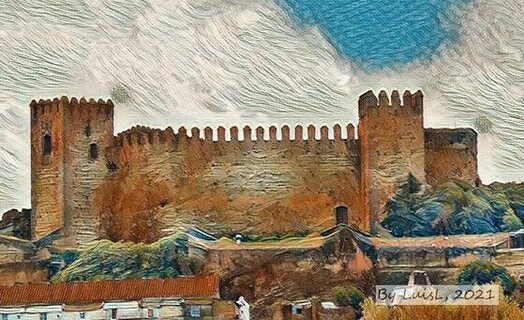
Location - District: Portalegre; Municipality: Campo Maior
Status: Classified as National Monument since 1911
See Map of Portugal
Time of existence of the Castle

Background and context
Erected on top of the Santa Vitória hillock to defend the Alentejo border, from the top of its towers you can see the neighbouring Badajoz and Elvas.
Currently, the monument is part of the Campo Maior fortress, which is, after Elvas, the most important fortification in the District.
The primitive human occupation of the site is lost in prehistory. It dates back to the time of the Gallo-Celtic peoples, and was successively inhabited by Romans, Visigoths and Muslims.
With the Christian Reconquista of the Iberian Peninsula it was conquered by Christian forces of the kingdom of Leon in the XIII century, after 1230. Afonso X of Leon and Castile raised Campo Maior to the rank of town in 1255.
Its first charter dates back to 1260, granted by its lord, the then Bishop of the Diocese of Badajoz, Friar Pedro Pérez
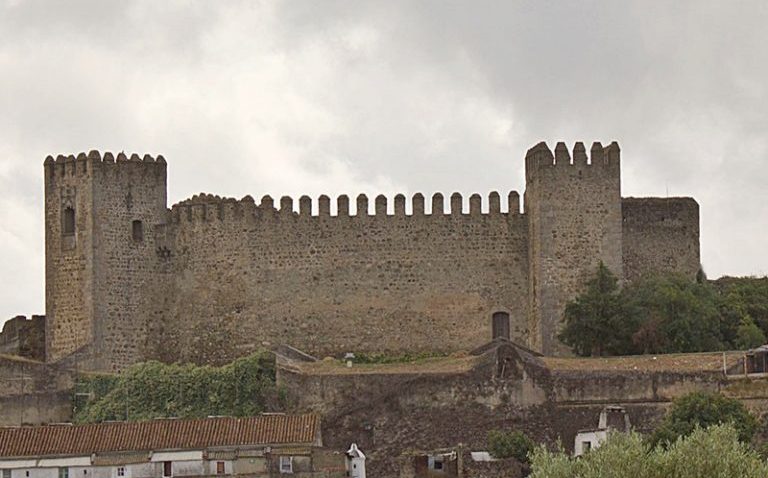
The medieval castle
The village was conquered by Portuguese forces between 1295 and 1296. It would only be, however, incorporated definitely to the domains of the Kingdom of Portugal by D. Dinis (1279-1325) by virtue of the Treaty of Alcanizes (1297).
To increase its settlement and ensure its defence, the sovereign granted it a charter and ordered, in 1310, the construction of its castle.
Faced with the growth of the settlement and the geostrategic importance that Campo Maior played in border defense, D. John II (1481-1495) ordered the expansion of the fortification, ordering the construction of a new set of walls to cover the entire urban perimeter, which in about 200 years had known a considerable expansion out of the primitive fence.
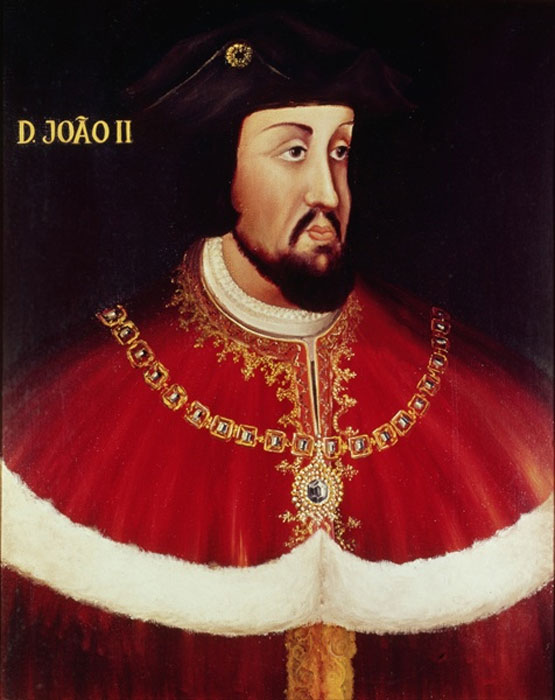
Portrait of King Dom João II (1455-95), (15th century, Portuguese School, Marine Museum, Lisbon)
These works continued under the reign of Manuel I of Portugal (1495-1521), when it was figured by Duarte de Armas in the "Livro das Fortalezas" (c. 1509), in two views (fls. 27 and 28) and a plan (fl. 124). In 1512, the monarch granted it the Foral Novo.
XVII and XVIII Centuries
In the 17th and 18th centuries, due to the modernization of the offensive means (use of artillery), the village's defense was remodeled with the introduction of bastions and construction of new military facilities, transforming the medieval settlement into a fortress.
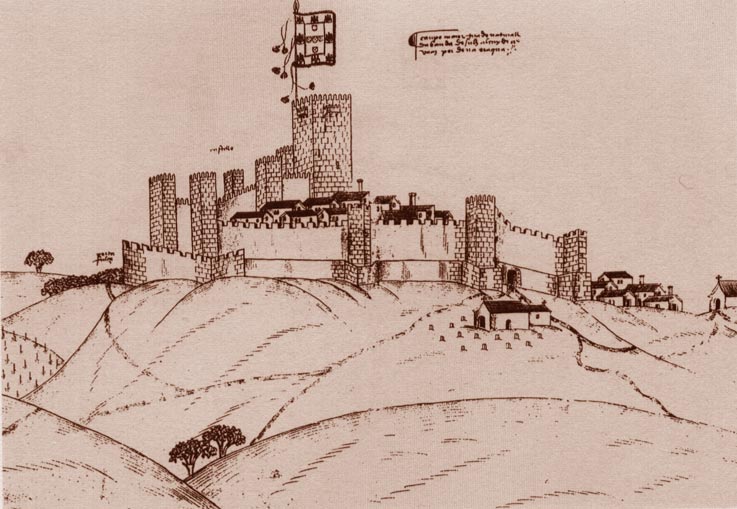
Castle of Campo Maior - south side, (Duarte de Armas, Livro das Fortalezas", c. 1509)
Campo Maior Fortress Square
After the Philippine period and the Restoration of Independence in 1640, there was a need to strengthen the entire defensive system of the country, with the construction of large fortified complexes, such as Elvas, or the reconstruction and expansion of old castles and fortresses.
Thus, and resulting from the decision of D. John IV, work began in 1645 to build the fortress bastion of the Castle of Campo Maior, under the guidance of John Cosmander, who was succeeded in this position by Frenchman Nicolau de Langres.
The work was only finished at the end of the 17th century, during the reign of D. Pedro II and under the direction of Mateus do Couto, having been transformed into a real stronghold.
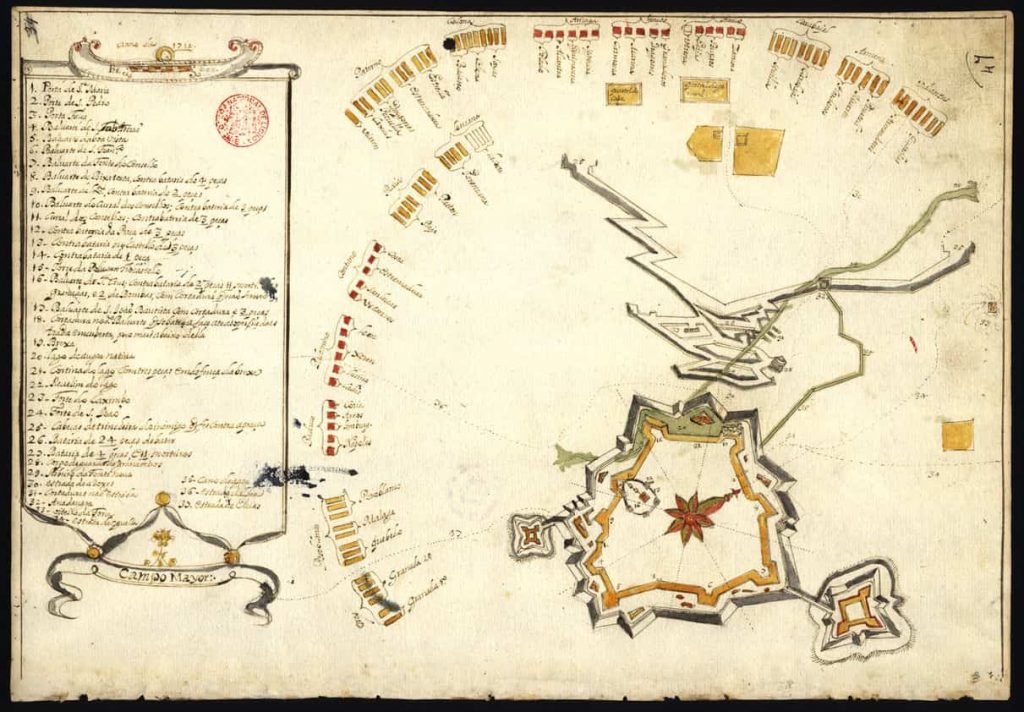
Plan of the siege of Campo Maior (1712)
Book of various plants of this Kingdom (Portugal) and Castile, [between 1699 and 1743].
CORREIA, João Tomás, ca 1667-? - National Library of Portugal
Later, in the context of the War of the Spanish Succession (1702-1713), it resisted undefeated a thirty-six-day siege imposed by Spanish troops under the command of the Marquis of Bay (1712).
On that occasion the fire of the besieging artillery caused him severe damage, having opened a breach in the bastion of São João, where a heroic resistance contained the enemy.
The tragedy of 1732
The medieval complex was severely damaged on 16 September 1732. At around three o'clock in the morning, during a violent storm, lightning struck the keep of the castle, used as a powder magazine.

Portrait of the Engineer Major of the Kingdom, Manuel de Azevedo Fortes
(Portrait, c. 1727, by Pierre-Antoine Quillard, National Museum of Ancient Art, Lisbon)
In the armory were stored, at that moment, 90 tons of gunpowder and five thousand rounds of ammunition.
The violent explosion was followed by a vast fire, which fatally dragged with it about two-thirds of the inhabitants of the town, consumed more than half the dwellings of the town, razing not only the castle but also the medieval fence.
The square was restored, still under the reign of D. João V (1705-1750), with the works in charge of the military engineer Manuel de Azevedo Fortes, who transformed the ruined complex into a smaller but more operational fortress.
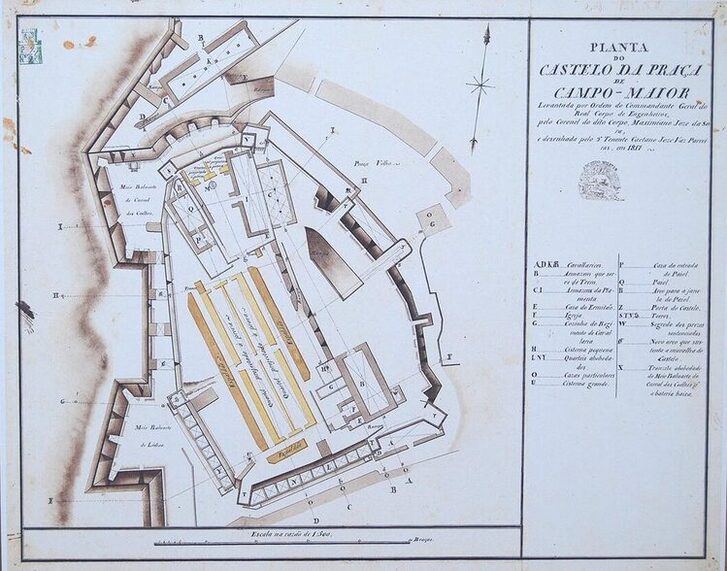
Plan of the Campo Maior Castle (1817, General Command of the Royal Corps of Engineers, Portugal)
The 19th Century
During the Peninsular War, the square fell with military honours after eighteen days of Spanish siege during the so-called War of the Oranges (1801).
Later, a popular uprising against the Napoleonic troops took place in the village (1808). The uprising was victorious due to the support of the army of Badajoz, which remained in the village for about three years.
Shortly afterwards, in 1811, a new French invasion maintained a tight siege for a month (13 days?) on the town, forcing it to capitulate.
But their resistance gave time for, four days later, the arrival of Luso-British reinforcements under the command of William Beresford, which put the French in stampede, during the Combat of Campo Maior.
At that time the town gained the title of "Vila Leal e Valorosa", present in the current town coat of arms.
As a reward, Beresford received the title of Marquis of Campo-Maior.
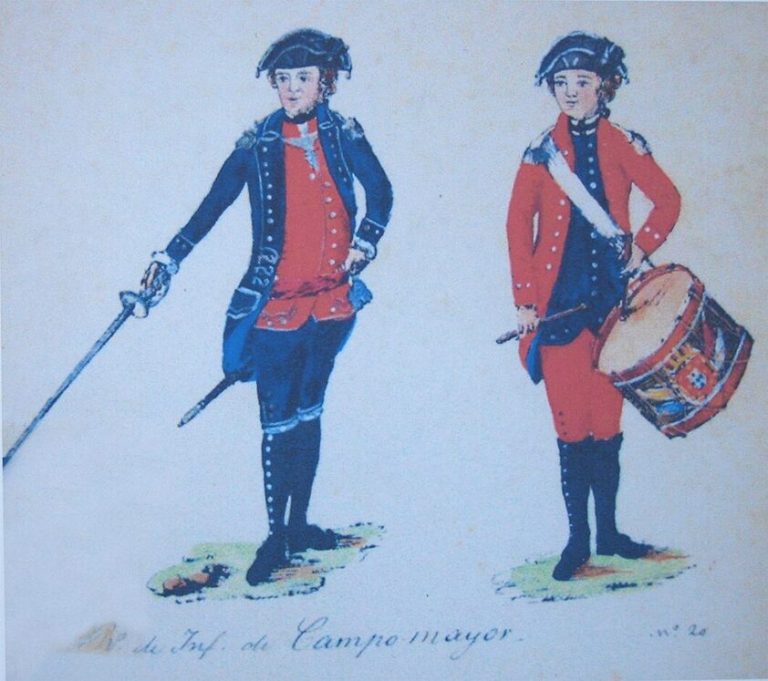
Soldiers of the Campo Maior Infantry Regiment (Early 19th century)
The 20th Century
In the first half of the 1940s, the Direcção-Geral dos Edifícios e Monumentos Nacionais (DGEMN) (General Directorate for National Buildings and Monuments) began work to consolidate and restore the complex, characterised by reconstruction work.
A second stage of works began in the second half of the 1960s, extending to the early 1970s, marked by interventions on the castle walls and the Chapel of Nossa Senhora dos Aflitos.
A third stage took place in the 1980s, with the monument becoming the responsibility of the Portuguese Institute for Architectural Heritage (IPPAR) from 1996 onwards.
In early 2010 there was a partial collapse of the monument due to bad weather in the region.
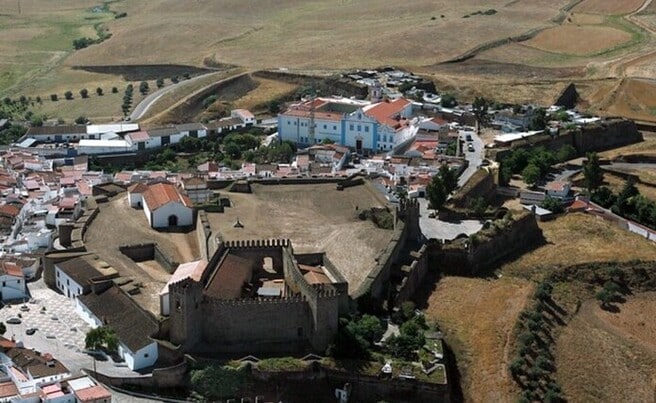
Requalification of the Castle and Abaluartada Fortification 2017-2020
The project (co-funded under the Portugal 2020 programme, Alentejo 2020 and ERDF) was implemented with the aim of enabling the rehabilitation and upgrading of the heritage and cultural heritage of a place closely linked to key moments in the history of Portugal.
It began in 2017 and was completed last year, 2020, and is expected to open soon, as soon as the ongoing deconfinement measures allow, so that it can be returned to the town, the Alentejo and the world.
Like it? Then share it!
